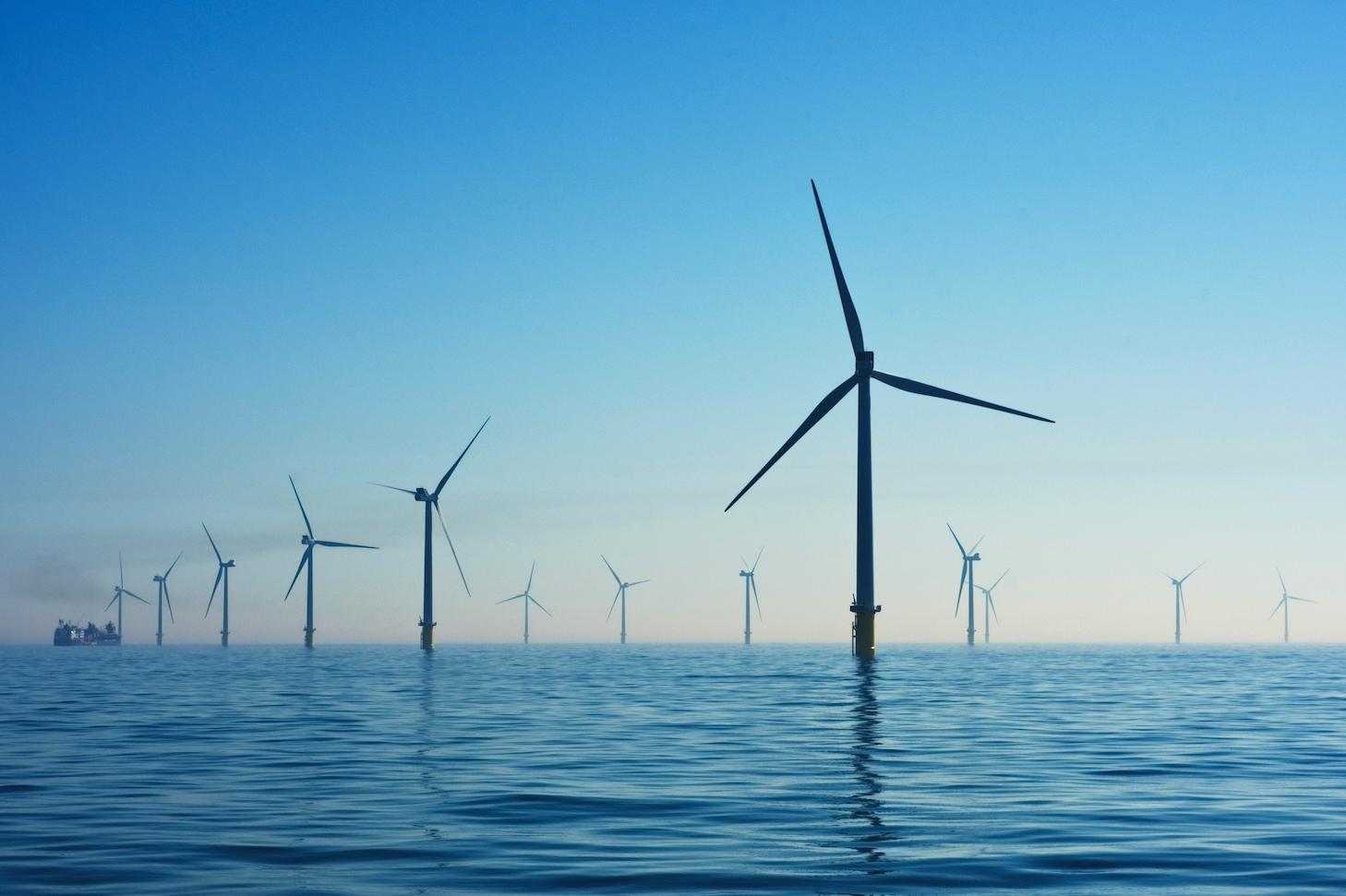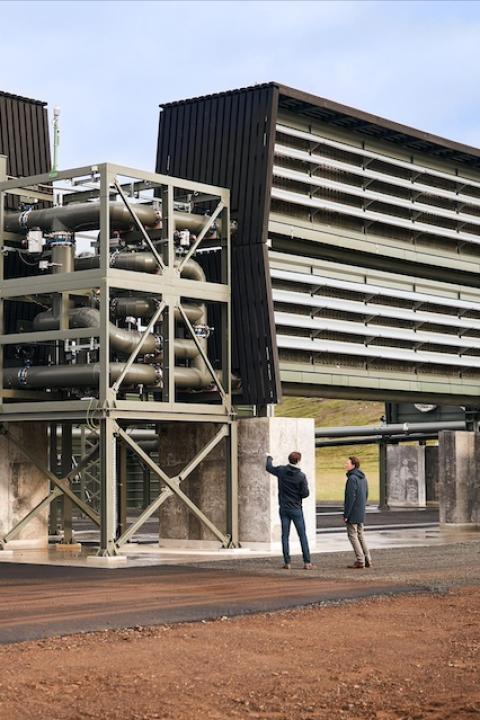
(Image: Nicholas Doherty/Unsplash)
The clean technology investment picture seemed mixed last fall in the United States. High-profile setbacks in the U.S. wind industry and lower-than-expected electric vehicle sales both colored the headlines. Partisan political efforts to obstruct clean tech investments also dampened the mood. But after the dust settled, it's clear these were minor hitches in an otherwise strong year for clean tech investment.
Another record-setting year for clean tech investment
The 2022 Inflation Reduction Act is widely credited with spurring clean technology investment in the U.S., including renewable energy and electric vehicles, as well as heat pumps and other retail products.
In the clean energy space alone, the economic and environmental advocacy organization E2 tracked at least 292 major projects in 41 states and Puerto Rico since the Inflation Reduction Act passed in August of 2022, totaling almost $118 billion in capital investment.
Last month, the independent research firm Rhodium Group reported similar signs of growth in its 2023 Clean Investment Monitor. The tracking platform shows a strong, record-setting performance compared to 2022.
“Clean energy and transportation investment in the U.S. set another record in Q4 of 2023, reaching $67 billion — a 40 percent increase from the same period in 2022,” according to Rhodium.
The Q4 results represented a strong finish for 2023, beating the average among all four quarters compared to the previous year. “Looking at the full year of 2023, clean investment came in at $239 billion, up 38 percent from 2022,” Rhodium added.
Electric vehicle sales were not so bad after all in 2023
As for the bad years, 2023 did seem to end on a low note for electric vehicle (EV) sales after Ford and GM announced they were cutting back their production schedules. The gloomy outlook trickled into media reports this year.
“There are signs that demand for EVs appears to be slowing and may not be quite as intense as either automakers or the Biden administration had expected,” PBS reported in January. Though the outlet also noted that 2023 was “a record for electric vehicles in the U.S., with more than 1.2 million sold. That was 50 percent higher than in 2022.”
Fifty percent growth does not seem like a slowdown of any sort. Some industry observers suggest that Ford and GM simply overshot their demand estimates. In other words, the “slowdown” is more a matter of internal book-keeping than an actual measurement of the pace of consumer interest in electric vehicles.
The slowdown, such as it was, could also reflect broader trends in auto sales. A more accurate measurement of consumer interest in EVs would be a comparison of EV sales growth with other vehicles. For example, last fall Cox Automotive assessed that overall new vehicle sales were projected to grow by only about 10 percent in 2023 compared to 2022.
In that context, EV sales are not slowing down at all. “EV sales are increasing faster than any other segment in the industry,” Michelle Krebs, a Cox Automotive executive auto analyst, told Inside Climate News last month.
To the extent that cost impacts sales, it’s also worth noting that the EV market is weighted in favor of SUVs and other larger, more expensive vehicles. In the coming years, automakers will offer a wider range of models and price points, potentially boosting sales with more affordable choices.
Wind power is making a comeback
The wind industry also suffered through some negative media attention in 2023, though in terms of clean energy investment, there was an actual downturn.
In fact, compared to the overall record of clean investment in 2023, the U.S. wind industry sticks out like a sore thumb. Wind investment declined 37 percent in 2023 compared to 2022, landing down at just $9 billion last year, according to Rhodium.
Onshore wind installations totaled only 7 gigawatts in 2023, according to the research organization BloombergNEF. That was a significant drop from the peak year of 2020 when installations totaled 17 gigawatts.
Nevertheless, signs of a better 2024 emerged in the form of “repowering” projects that replace aging wind turbines with new, more efficient models. With an assist from new tax credits, repowering provides the wind industry with an opportunity to grow despite the rising opposition to new wind farms.
Repowering projects alone will add an estimated 6.5 to 7.5 gigawatts to the grid in 2024, Scott Wilmot, vice president of power and renewables intelligence for Enverus Intelligence Research, told Utility Dive. New wind farms will likely add about the same amount.
As for offshore wind, 2023 was a disappointing year marked by a weak showing for new lease offerings in the Gulf of Mexico and the cancellation of two offshore wind farms in New Jersey.
Still, Bloomberg is among those spotting signs that offshore wind developers are beginning to sort through the same challenges that impeded onshore growth last year, including “supply-chain kinks,” inflation and higher borrowing costs.
“Prospects are improving thanks to new tax credits and stronger demand,” Bloomberg reporters Josh Saul and Priscila Azevedo Rocha wrote.
Solving the heat pump problem
Wind power was not the only underperforming area of clean tech investment in 2023. Retail heat pump investments declined 16 percent in 2023 compared to 2022, according to Rhodium.
This is troubling news, considering that electric heat pumps were identified as a key pathway for decarbonizing heating, ventilation and cooling (HVAC) systems that otherwise run on gas, propane or heating oil.
On a brighter note, Rhodium also points out that heat pumps gained market share in the residential construction market in 2023. That could help stimulate investor interest in the future.
One obstacle to faster investment growth in the heat pump field is the cost of installation. In February, the U.S. Department of Energy’s National Renewable Energy Laboratory issued a report indicating that tax credits and rebates in the Inflation Reduction Act will help resolve the cost issue for many households, but not for others.
“Millions of U.S. households would benefit from heat pumps, but the cost of installing the technology needs to come down to make their use a more attractive proposition,” according to the report.
The report also suggests that installation costs are high in part because inexperienced installers are offsetting additional expenses related to working with unfamiliar equipment and processes. To address that obstacle, the Energy Department began funding heat pump installation training programs. Efforts to diversify the clean tech workforce could also help accelerate the pace of installer know-how.
The last word on clean tech investment
All in all, the 2023 results demonstrate that the clean tech field is a wide-ranging and diverse one. If obstacles arise in some areas, investors have many opportunities in others. In fact, the conventional clean tech investments of today — wind, solar, EVs and heat pumps — are beginning to be overshadowed by new opportunities.
There was a significant increase in emerging clean tech fields drawing investment in 2023, including clean hydrogen, sustainable aviation fuels and carbon capture, according to Rhodium.
“The fastest investment growth last year occurred in the deployment of emerging climate technologies — up ten-fold from $0.9 billion in 2022 to $9.1 billion in 2023 — and in the manufacturing of clean technology, up 153 percent from $19 billion in 2022 to $49 billion in 2023,” according to Rhodium.
Partisan public officials in about two dozen states spent considerable time and energy attempting to obstruct clean energy investment. Despite their attempts to leverage their legislative and legal authority, the numbers don’t lie. Clean investment has nowhere to go but up.

Tina writes frequently for TriplePundit and other websites, with a focus on military, government and corporate sustainability, clean tech research and emerging energy technologies. She is a former Deputy Director of Public Affairs of the New York City Department of Environmental Protection, and author of books and articles on recycling and other conservation themes.














